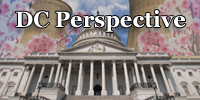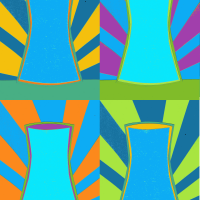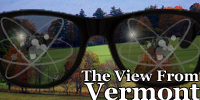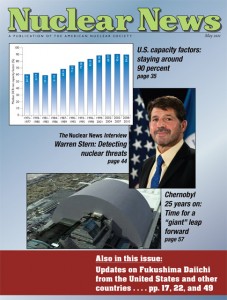Another TAFF video: "The Money Mobile"
Time again for another video from the Texas Atomic Film Festival. The video, Money Mobile Goes Nuclear, was the winner at the 2010 festival in the Best Editing category.

Time again for another video from the Texas Atomic Film Festival. The video, Money Mobile Goes Nuclear, was the winner at the 2010 festival in the Best Editing category.
The nation's nuclear energy bloggers have their say about what to do with used fuel
 On May 13, the Blue Ribbon Commission on America's Nuclear Future released its draft conclusions and recommendations. Despite its more general sounding title, the commission's work mostly concerned the nuclear waste issue. It was created by President Obama's administration primarily to investigate alternatives to the proposed Yucca Mountain repository, after the administration moved to shut that program down. While the commission did release some recommendations on other issues such as advanced reactors and Fukishima, this post will focus on its recommendations concerning nuclear waste policy.
On May 13, the Blue Ribbon Commission on America's Nuclear Future released its draft conclusions and recommendations. Despite its more general sounding title, the commission's work mostly concerned the nuclear waste issue. It was created by President Obama's administration primarily to investigate alternatives to the proposed Yucca Mountain repository, after the administration moved to shut that program down. While the commission did release some recommendations on other issues such as advanced reactors and Fukishima, this post will focus on its recommendations concerning nuclear waste policy.
For those of us involved in the design of nuclear reactors in the 1970s and 1980s, it was fairly common to walk into somebody's office and see a wall chart depicting the reactor that was being developed or serviced. These were foldout charts that were technically accurate. They were 3D renditions of the reactor, with cutouts showing the internals of the plant, and were made available by the magazine Nuclear Engineering International in the 1950s through the 1990s as inserts in the magazine. Now, several decades later, many of these charts were lost to the publisher due to the multitude of reorganizations and moves that have occurred.
The third annual Texas Atomic Film Festival (TAFF) was held on May 5, 2011, by the Cockrell School of Engineering at the University of Texas at Austin. The 2011 TAFF featured seven films produced by students from UT-Austin as well as distance-learning students from Iowa State University, in Ames, Iowa. The goal of the TAFF is to allow students to communicate technical subjects to their peers by using digital movie content.
A collaborative effort celebrates a one-year milestone
Russia and Turkey say not so fast
 As an artist I have been lucky to find a place in the nuclear community, but I haven't forgotten what it feels like to be confused about energy (there was a time when I thought that biofuels and solar panels were a viable solution). I want to describe a situation that many young Americans are facing right now, in order to offer perspective on what energy issues look like from the outside. Do your best to put yourself in someone else's shoes for a moment:
As an artist I have been lucky to find a place in the nuclear community, but I haven't forgotten what it feels like to be confused about energy (there was a time when I thought that biofuels and solar panels were a viable solution). I want to describe a situation that many young Americans are facing right now, in order to offer perspective on what energy issues look like from the outside. Do your best to put yourself in someone else's shoes for a moment:
 A recent event in Vermont was a Chernobyl 25th anniversary gathering at Dartmouth College's Dickey Center. The event featured a photo exhibit and a panel presentation. Former ambassador to Belarus in the 1990s, Kenneth Yalowitz, heads the center and he chaired and sat on the panel. Yalowitz was on a larger panel on Chernobyl on its 20th anniversary five years ago. This year's event was sponsored by the Sierra Club and was widely advertised in the local press.
A recent event in Vermont was a Chernobyl 25th anniversary gathering at Dartmouth College's Dickey Center. The event featured a photo exhibit and a panel presentation. Former ambassador to Belarus in the 1990s, Kenneth Yalowitz, heads the center and he chaired and sat on the panel. Yalowitz was on a larger panel on Chernobyl on its 20th anniversary five years ago. This year's event was sponsored by the Sierra Club and was widely advertised in the local press.

The 51st Carnival of Nuclear Energy Blogs is up at NuclearGreen. The carnival features blog posts from the leading U.S. nuclear bloggers and is a roundup of featured content from them.
The D.C. Circuit Court of Appeals heard oral arguments on March 22, 2011, for the lawsuit brought by three private citizens of Washington State challenging the president's authority to cancel the Yucca Mountain nuclear waste repository.
Many American Nuclear Society members and groups across the United States have been energetically involved in the media, in their communities, and on campus during the recent events at the Fukushima plant. These members and groups have provided their knowledge and expertise to improve the accuracy of public discussions about the Fukushima events during a time when it has been sorely needed. This effort continues around the country as ANS members provide accurate, scientifically-sound information in front of TV cameras, at campus symposia, on local radio, in newspapers and journals, and by many other ways.
 The 50th Carnival of Nuclear Energy Blogs is up at Next Big Future. The carnival features blog posts from the leading U.S. nuclear bloggers and is a roundup of featured content from them.
The 50th Carnival of Nuclear Energy Blogs is up at Next Big Future. The carnival features blog posts from the leading U.S. nuclear bloggers and is a roundup of featured content from them.
The New York Times recently published an op-ed by Dr. Helen Caldicott titled Unsafe at Any Dose in which she summarized her theory that even the tiniest doses of radiation cause both negative health consequences for the victim and undetectable genetic defects that will affect many generations to come. Here is an example of the language that she uses to propagate this theory:
 The hard-copy May issue of Nuclear News will soon be in the hands of American Nuclear Society members. It will also be available electronically to members.
The hard-copy May issue of Nuclear News will soon be in the hands of American Nuclear Society members. It will also be available electronically to members.
On April 12, one month after the initiation of the tragedy at the Fukushima Daiichi I nuclear power plant, the Japanese government labeled the event a level seven accident-the most severe rating on the International Nuclear Events Scale (INES). This announcement heightened international concerns about the severity of the event and the potential for circumstances to worsen. This posting is intended to provide some clarification about these events in historical context.
Now that the recent events at the nuclear plants at Fukushima are largely behind us and the stabilization is underway, we look to the 25th anniversary of Chernobyl and recognize that comparisons are inevitable. But it's vital that we keep these events in perspective as we face the challenges of developing our energy resources for our global future.
The 49th Carnival of Nuclear Energy Blogs is up at Yes Vermont Yankee. The carnival features blog posts from the leading U.S. nuclear bloggers and is a roundup of featured content from them.
 Established in 1983, the American Nuclear Society's Seaborg Medal recognizes an individual who has made outstanding scientific or engineering research contributions to the development of peaceful uses of nuclear energy. Nominations for candidates for the award are invited from technical societies, heads of governments, and other appropriate individuals. The deadline for nomination to be received at ANS is June 1, 2011.
Established in 1983, the American Nuclear Society's Seaborg Medal recognizes an individual who has made outstanding scientific or engineering research contributions to the development of peaceful uses of nuclear energy. Nominations for candidates for the award are invited from technical societies, heads of governments, and other appropriate individuals. The deadline for nomination to be received at ANS is June 1, 2011.